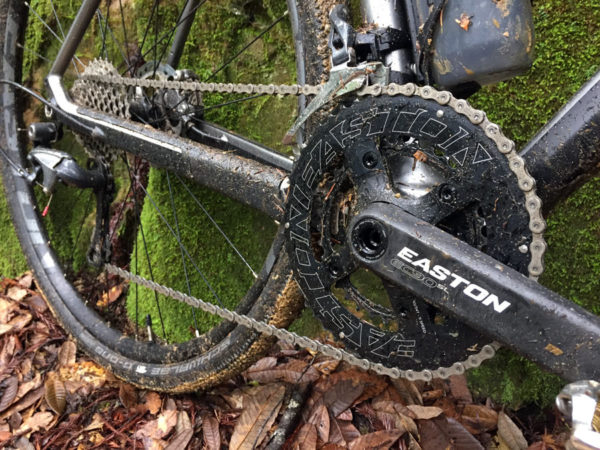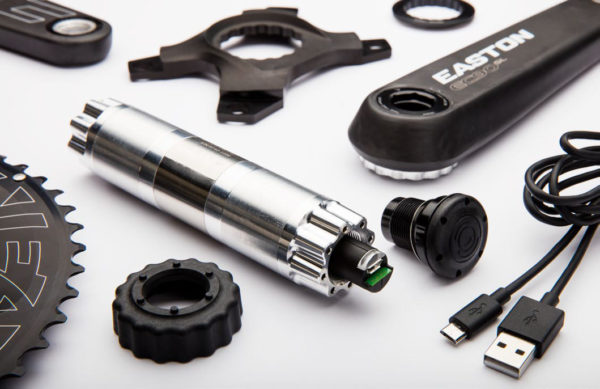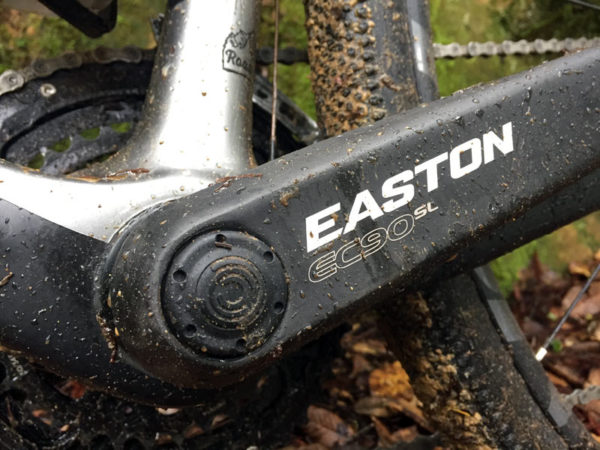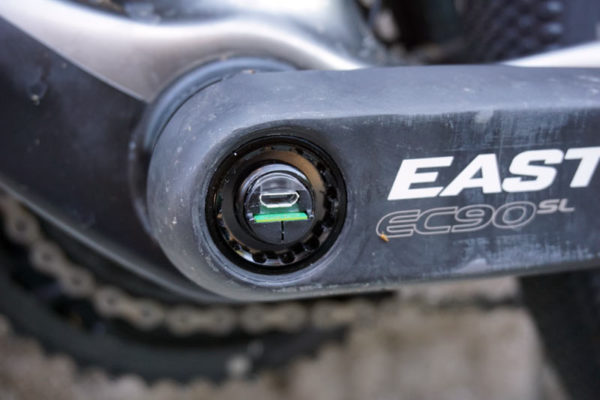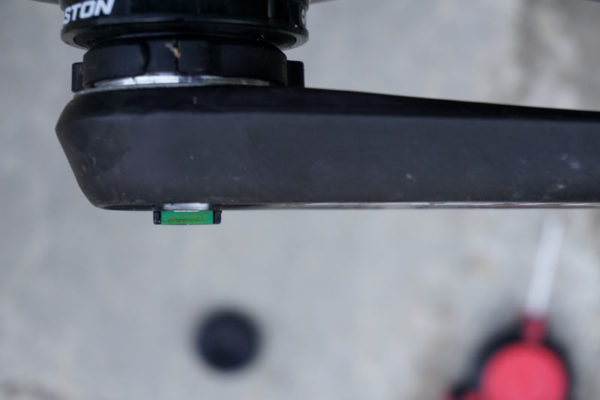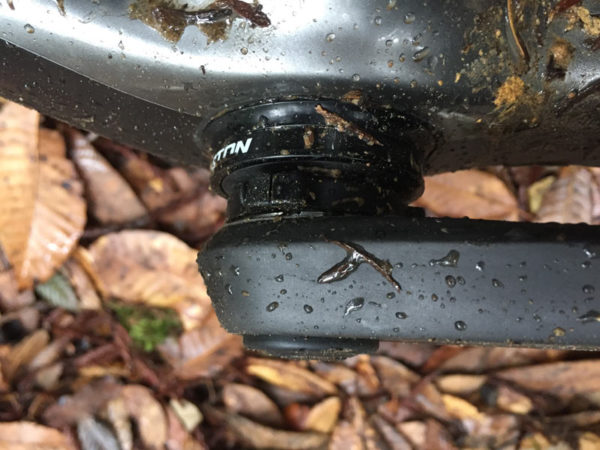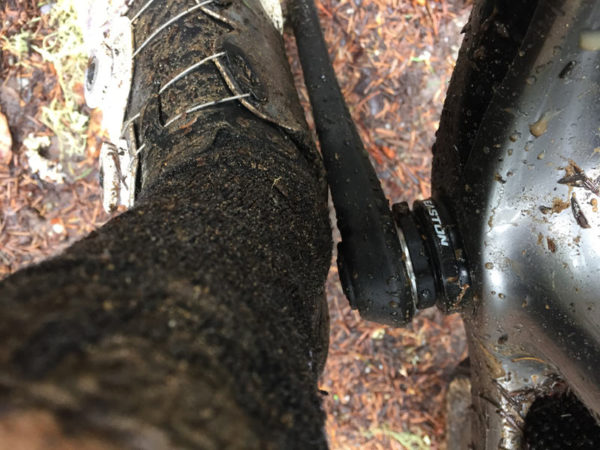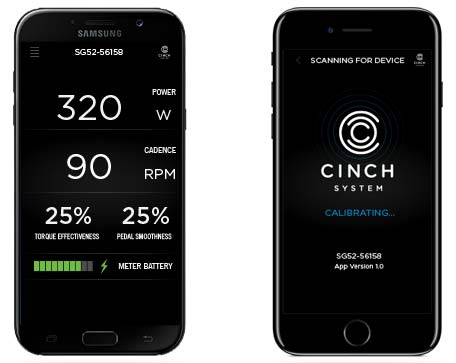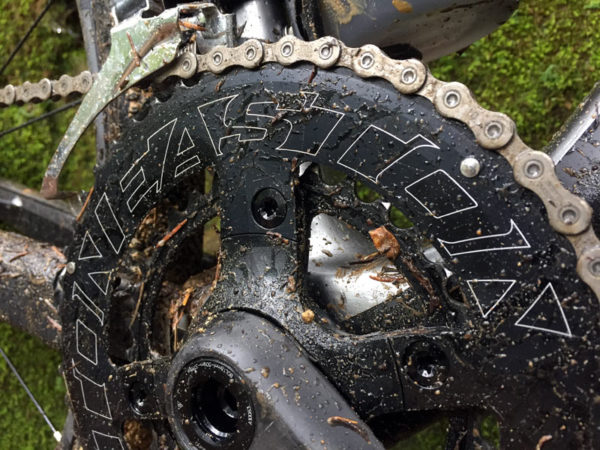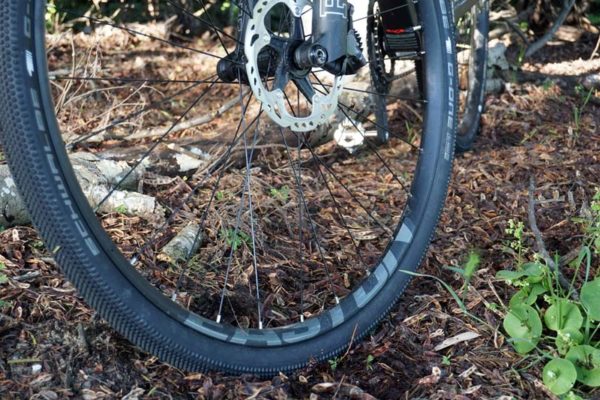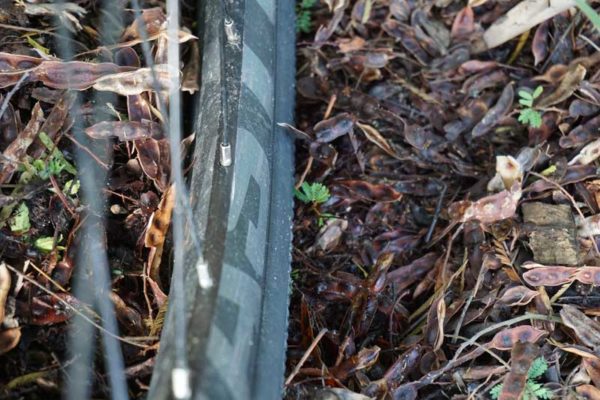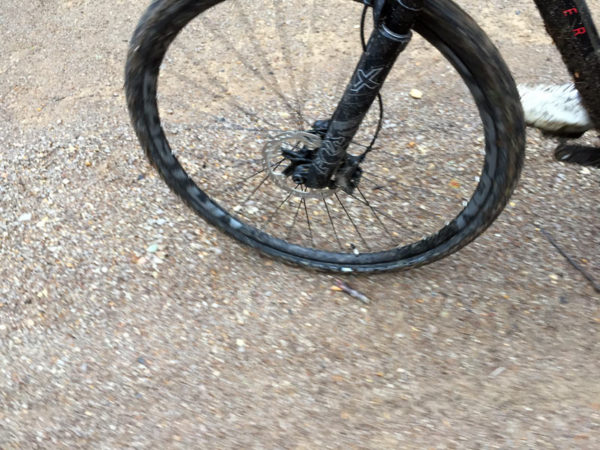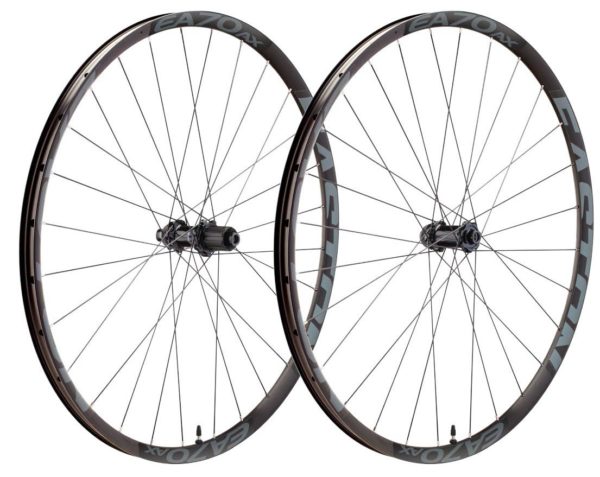Easton’s CINCH carbon crank arms debuted last year in time for ‘cross racers to take full advantage of the super light design and convenient direct mount 1x chainring options. We did, and reviewed them here. Now, they’ve added an equally light power meter add-on and the 2x chainrings are finally available.
The CINCH Power Meter Spindle packs all of the electronics -battery, strain gauges, transmitters- inside the hollow spindle, adding just 65g and a couple millimeters protrusion. Thanks to the crankset’s completely modular design, you can add it to your existing Easton CINCH cranks, or buy it as a complete kit with your choice of chainrings and arm lengths…
Easton partnered with acquired technology from a Danish firm that had developed the software but didn’t have the means to bring it to market as a complete product. It’s measuring left-side power only, then doubles that number to give you an estimated total power output. For the same reasons as Rotor’s InPower product, it can only measure left side power because on the right (drive) side, all of the power is going directly into the chainrings, there’s no torsional strain on the spindle. On the non-drive side, your power has to transfer through the spindle, which creates enough torsional deflection to measure, which is then used to calculate your power output.
The kit, regardless of whether you buy it on its own or as part of a crank arm package, comes with the spindle, extractor, Campy cassette tool, cover with removal tool, and 2m charging cable. As this pic shows, everything else is a la carte – choose your arm length, ring size and type, then combine to perfect your drivetrain. UPDATE: Easton clarified that their parts use an interface that’s the same as Mavic’s hubs and Campy’s cassette lock ring, but that included tool is only meant to be used for this crankset and spindle, and vice versa…they can’t guarantee that theirs or the other brands’ tools will work for anything other than their original purposes.
Besides the clean looks, the spindle-based design allows for a larger, USB-rechargeable battery with 400 hour life. It also lets you switch between arm lengths and chainring sizes and types without affecting its accuracy. Plus, since all electronics are hidden inside the spindle, it’s very water proof. The cover plate uses the Mavic hub adjustment tool’s hole pattern…
…and the non-drive crank arm uses a Campagnolo cassette lock ring tool to extract the crank from the spindle. Fortunately, the power meter spindle comes with both, but should you lose them, your local shop should at least be able to help you since they’re standard tools. Important note: If you’re adding the spindle to your existing crankset, you need to make sure the antenna is aligned horizontally with the crank as shown here. The spindle’s grooves aren’t keyed to a single installation angle, so you could install it wrong if you’re like me and usually disregard instruction manuals. It’ll still work, but it won’t be as accurate.
They say the carbon fiber arms soak up signals, so the antenna sticks out from the crank arm by about 2mm in order to send a clear signal to your cycling computer.
That means the cap sticks out slightly…
…which means your heel or shoe might rub it.
To set up the power meter, they’ll have a CINCH app (Android/iOS) to calibrate it and show you battery level, update the firmware and let you turn the power meter on “Airplane Mode” so it stops transmitting. To turn it back on, simply plug it in for 3 seconds.
The cranks measure power, cadence, torque effectiveness and pedal smoothness. TE is the ratio of total torque versus negative torque (i.e. the dead weight of your leg on the upstroke), and PS is the ratio between total torque throughout the entire revolution and the maximum torque of any point in the revolution. To improve both, you’ll want to reduce spikes in your power output throughout the revolution…or pull more evenly through the upstroke. They say both numbers are going to change almost too rapidly to be of much use while out riding, but both are shown on the app in real time, letting you use that in a trainer for instant feedback and fine tuning your pedal stroke. Garmins should show that data, and we’re guessing other computers do or will also have those metrics available, too.
Quick Specs:
- 30mm spindle
- Dual BLE/ANT+
- Power Accuracy +/- 2%
- Spindle alone is $600
- Spindle on Arms is $950
- With chainrings is $1,100 (double), $975-1000 (single depending on ring size)
- Available May 11, 2017
It has a 129mm spindle length for road/gravel/cyclocross applications, and there’s a 134mm spindle length for mountain bikes as a Race Face product.
Shown at launch, the double chainrings are finally available. They use a 4-bolt 110mm BCD to match current Shimano rings if you needed something other than what Easton offers, but they admit it won’t look nearly as good. We rode more than three hours with about 3,000 feet of climbing in a light rain on all types of dirt, gravel and rock and not a single person in our group of 15 had any issues with shifting. Personally, I only dropped the chain once because a stick flew into it, but it went right back on and I was able to shift up and down frequently with zero problems. Considering the conditions, shift speed and smoothness was respectable, and I’m bringing this bike home with me for long term testing of these parts (including the wheels below) and the new Fox 32 SC AX fork.
EA70 AX WHEELS
Growing their AX line are the new EA70 AX alloy wheels. The welded EA70 rims are all new and measure 27mm wide external, 24mm wide internal and 20mm deep. Designed for 35mm to 40mm wide tires, they’re ready for anything from cyclocross to light bikepacking.
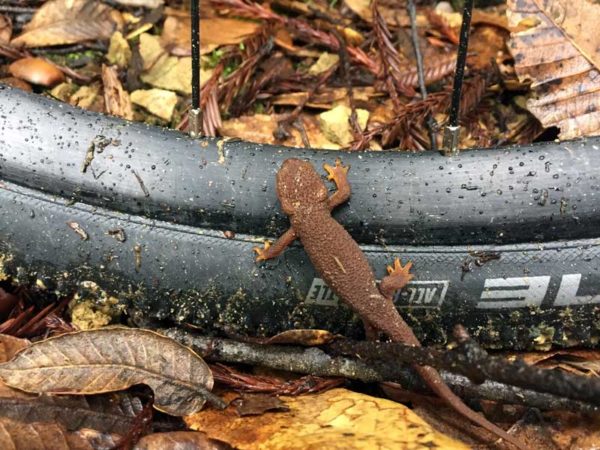
The brushed black ano finish and rounded profile looks sleek, and it shed mud, water and gecko feet well.
They use a new Centerlock version of their X5 sealed cartridge bearing hubs. They’re based off a mountain bike one, too, but modified for road by moving the driveside flange in slightly to make room for an 11-speed freehub body.
Quick Specs:
- Tubeless ready, disc specific
- 650B (1,670g) and 700c (1,760g)
- Front: 12mm TA -or- 9mm QR / 15mm TA
- Rear: 10mm QR / 12×142 TA
- Shimano or XD driver freehub body
- Silver brass nipples
- 28 3x straight pull double butted black spokes
First impressions are good in that no one flatted or had wheel troubles despite some high speed descending on very rough “roads”. Which isn’t surprising, since it’s the same rim as the original ARC24 XC mountain bike rim.
Retail is $600. They’re designed to fit in with the EA70 / EC90 AX flared drop bars introduced at Eurobike last fall, which we suspect is only the start of their AX collection of “off road” road bike parts.

